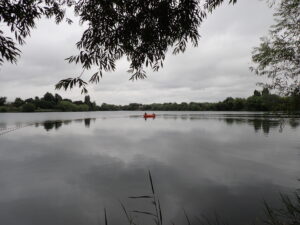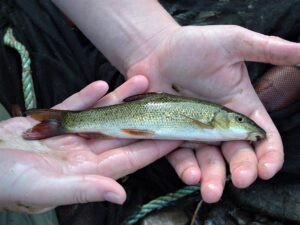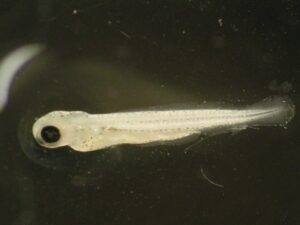Assessing the impacts of floodplain rehabilitation on fish population dynamics: a novel approach using conventional fish surveys, biotelemetry and biochemical analysis
Assessing the impacts of floodplain rehabilitation on fish population dynamics: a novel approach using conventional fish surveys, biotelemetry and biochemical analysis
Dr Andy Nunn (University of Hull), Dr Jon Bolland (University of Hull) and Dr Brian Hayden (University of New Brunswick)
CASE project partners: Environment Agency, Trent Rivers Trust
Contact email: a.d.nunn@hull.ac.uk



Summary
River flood plains are biodiversity hotspots and provide essential nursery habitat for multiple riverine fishes. Many rivers, however, have been extensively modified and, in a significant proportion of cases, separated from their flood plain. Such modifications inevitably reduce habitat complexity and connectivity, resulting in detrimental impacts on fish populations. Although the potential impacts of habitat fragmentation on longitudinal (upstream-downstream) migration are now widely appreciated and increasingly being mitigated, impediments to lateral (river-flood plain) migration have received far less attention. This is important because the life cycles of some fish species are intrinsically linked to flood plains, and many generalist species use such habitats on a facultative basis.
The aim of this interdisciplinary study is to assess the impacts of floodplain ‘rehabilitation’ (connecting man-made waterbodies to river channels) on fish population dynamics. This will be accomplished using a novel combination of conventional fish surveys, biotelemetry (fish tracking) techniques and stable isotope analysis (SIA). Conventional surveys will be used to capture larval, juvenile and adult fish from various locations along the main stem and multiple man-made waterbodies in the flood plain of a lowland river, and the data will be analysed to examine spatial (e.g. rehabilitated vs. degraded river reaches) and temporal (e.g. seasonal/phenological) variations in fish assemblage structure. In addition, traps spanning the entire width and depth of the channels connecting man-made waterbodies to the river will be used to capture immigrating and emigrating fishes over multiple 24-h periods (to account for temporal variations in assemblage structure and/or behaviour). This will be complemented by Passive Integrated Transponder (PIT) technology, which will be used to continuously monitor the movements of larger, individual fish between the river and flood plain. This will be achieved by PIT tagging fish from each man-made waterbody and the adjacent river, with time-stamped movements monitored using equipment deployed in the connecting channels. Key environmental variables, such as water temperature and river discharge, will be monitored for the duration of the trapping and telemetry studies to facilitate analysis and interpretation of the data. Finally, carbon (δ13C), nitrogen (δ15N) and hydrogen (δ2H) SIA of larval, juvenile and adult fish, and putative prey/energy sources, from man-made waterbodies, adjacent river stretches (rehabilitated) and river stretches without man-made waterbodies (degraded) will be used to infer historic habitat use and dispersal, and so examine the importance of rehabilitated floodplain habitats as foraging areas or food sources for riverine fish.
The study will focus on the River Trent in central England, the subject of an on-going rehabilitation scheme where at least 12 man-made waterbodies have been connected to the main stem of the river and where the supervisory team has a strong track record of collaboration with the project partners. The collaborative and interdisciplinary nature of the project means that the student will become experienced in a wide range of field and laboratory skills, while developing strong links to industry. Tangible benefits of this study include an enhanced understanding of how fish of contrasting life stages (larval vs. juvenile vs. adult) and life histories (specialists vs. generalists) respond to anthropogenic river rehabilitation, with a particular focus on habitat use and movements, and the contributions of man-made waterbodies to riverine fish populations. Such information is essential from an operational perspective to produce effective, evidence-based management and rehabilitation plans.
University of Hull webinar
The University of Hull are running a free webinar on Tuesday 28 November at 5pm, giving you the opportunity to meet their PhD supervisors and current students from the Panorama Doctoral Training Partnership. Find out more about Hull-based research projects and ask your own questions about the programme. Click here to book your place.
